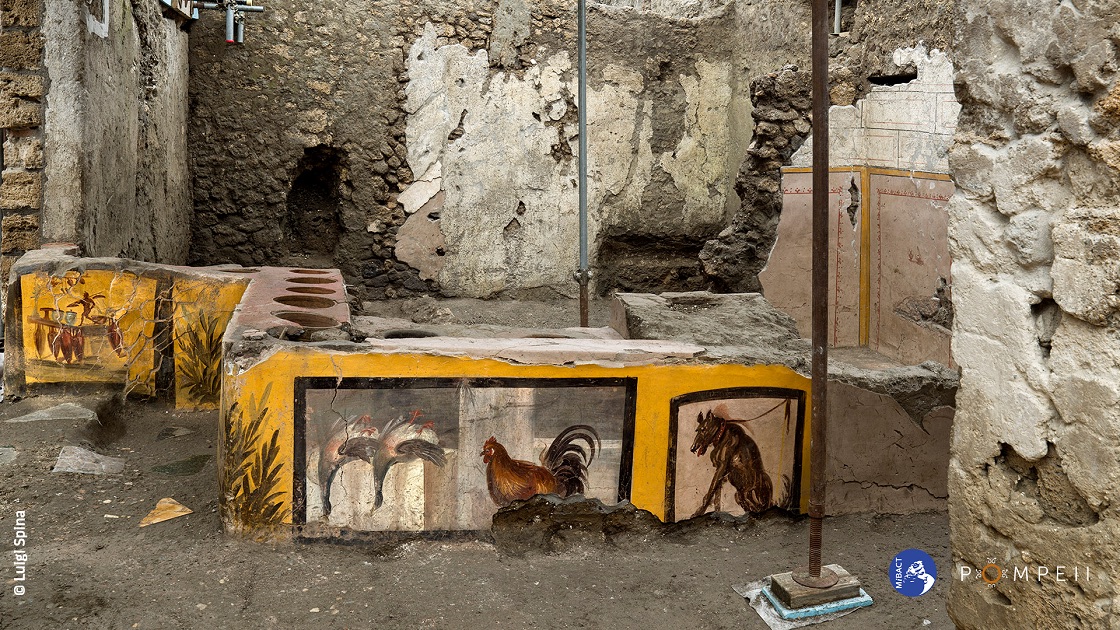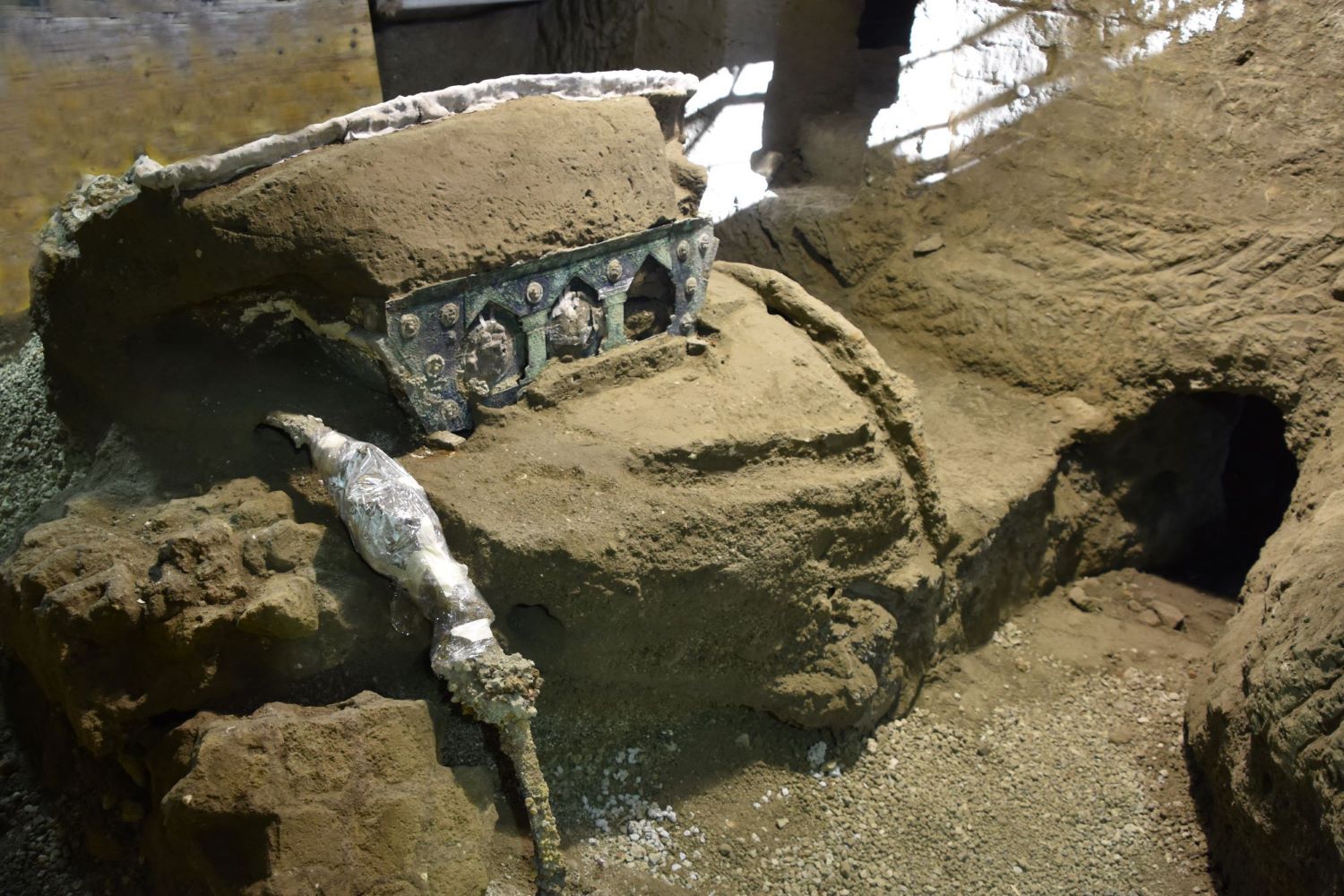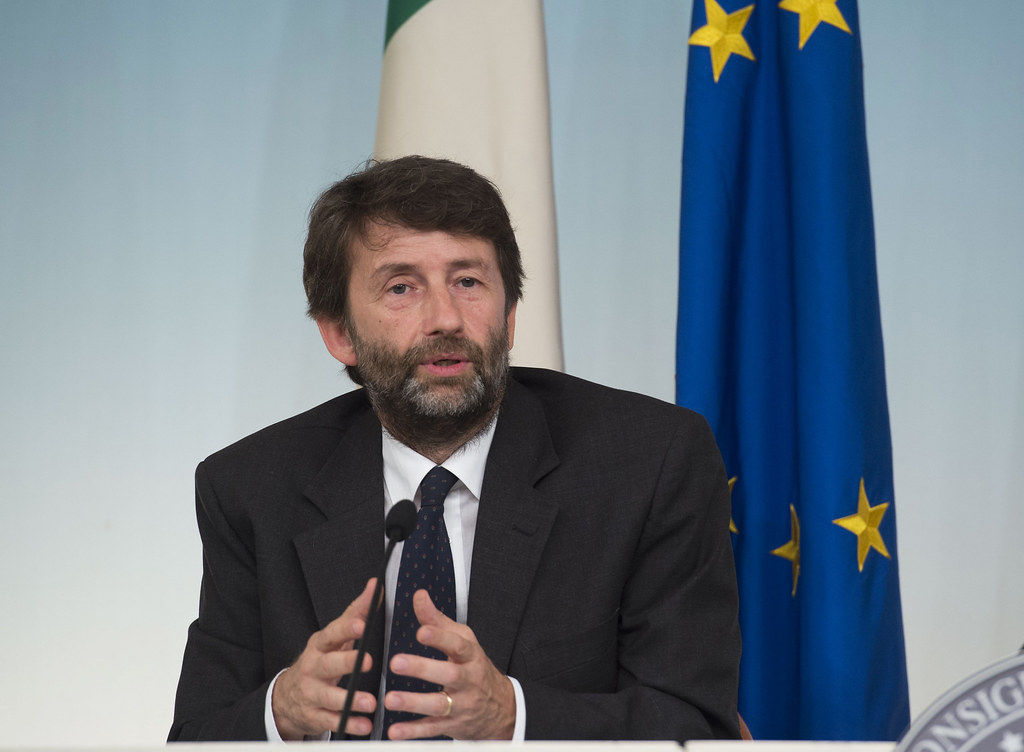In 2017 the Archeological Park of Pompeii, the Public Prosecutor’s Office of nearby Torre Annunziata, and the Carabinieri Cultural Protection Unit in Naples launched joint operations to combat the extensive illegal looting in the world-famous ruins of Pompeii. They concentrated their efforts in the area of the once magnificent 15-room suburban Villa of Cività Giuliana (some 700 meters northwest of Pompeii’s main site) built on what was once the seafront during the reign of the emperor Augustus. This area, which makes up about a third of the Park, had been left unexcavated except by tombaroli or fortune seekers, who live above or nearby. Undisturbed, over time they had built a complicated network of tunnels to rob the Villa of its treasures.
The signing of the “Memorandum of Understanding” in 2019 reinforced 2017’s cooperation and has led to arrests but sadly, still no jail sentences. Nevertheless, over the past three years these agreements have been instrumental in uncovering several outstanding finds at “downtown” Pompeii and at the Villa.

At the Villa: these include three horses, one of which still wears a bronze harness as if ready to carry its owners to safety, away from the crushing shower of lapilli (or hot ash) (December 2018); and the bodies of two men lying side-by-side in their death throes, one probably a slave wearing a tunic and aged between 18 and 25; the other probably his owner as well as of the Villa, wrapped in a woolen cape, wearing the remnants of elegant clothing and aged between 30 and 40 (November 2020). As for “Downtown”: a badly decayed wooden box of sorceress’s charms, amulets, and magic stones (August 2019), and a thermopolium or precursor to a modern Fast Food (already described in two articles in the December 27th 2020 issue of La Voce).
Shortly after the discovery of the thermopolium, near the three horses in the same stables’ area of Villa of Cività Giuliana, on January 7–but not announced until March–archeologists came across a small unusually shaped piece of iron. It was protected by a collapsed ancient carbonized oak wood ceiling of the stables’ porch and had been buried under 6 meters of ash, so luckily untouched by looters– probably because too complicated to pursue unnoticed.

Thanks to the iron fragment’s unusual shape, archeologists and an interdisciplinary team of architects, engineers, restorers, volcanologists, and anthropologists, who were certain that the fragment was part of a bigger find, spent the next several weeks working slowly but surely, even on weekends, to uncover a nearly intact ceremonial chariot with four iron wheels connected by an advanced mechanical system and known as a pilentum. Because of its fragility, they used special techniques including plaster molding to proceed without further damage to the pilentum. For the time being the pilentum has been transported to the Park’s restoration lab, where restorers are working to remove the remaining volcanic material before beginning a lengthy complex restoration.
“In the past other ancient transport vehicles had been discovered,” said Massimo Osanna, the former Director of Pompeii’s site (2016-2020) and now the newly appointed Director General of all of Italy’s State Museums. “Examples are the carriage from Pompeii’s magnificent House of Menander and the two chariots uncovered at Villa Arianna in nearby Castellammare di Stabia (one of which can be admired in the new Stabian Antiquarium), but without the elegance of this one. So for Italy, this pilentum is an unicum, although some locals say that another similar one had been dug up by thieves and has disappeared. It can only be compared to a fleet of chariots found around fifteen years ago in a tomb in Thrace in northern Greece near the border with Bulgaria.”

This oak wood pilentum, with its sides painted in red and black and adorned with tin medallions in relief of cupids and erotic love scenes with couples of satyrs and nymphs attached to bronze panels, has led archeologists to believe that it was not meant for everyday use, but probably for elite wedding processions to transport a wealthy bride from her father’s to her husband’s, and therefore her new, home.
This hypothesis seems likely because ears of wheat, a symbol of fertility, were uncovered on the pilentum’s wooden seat along with remnants of elegant cushions and ropes.
“The discovery of this ornate pilentum,” commented Dario Franceschini, Italy’s Minister of Culture, “is of course culturally extremely important, but also an enormous success for Italy’s struggle to prevent the theft of our artistic heritage.
This will be a key topic at the next meeting of the G20 scheduled for May in Rome, Co-vid permitting, and a major project for Gabriel Zuchtriegel, the German-born newly appointed Director of Pompeii’s Archeological Park, formerly the director of the Greek Temples at Paestum. Pompeii continues to amaze us with its discoveries and will do so for many more years with its 20 hectares still to be excavated.”











